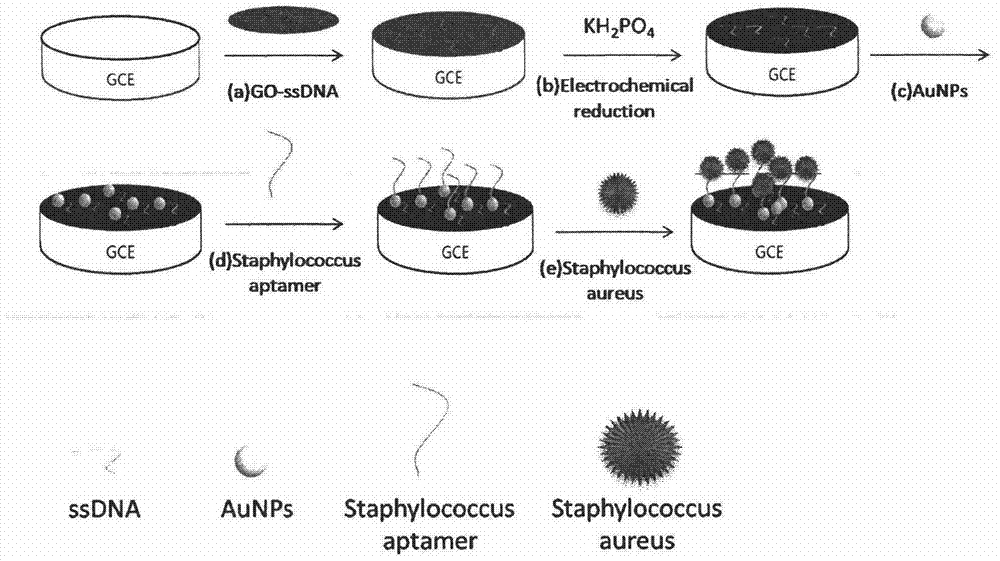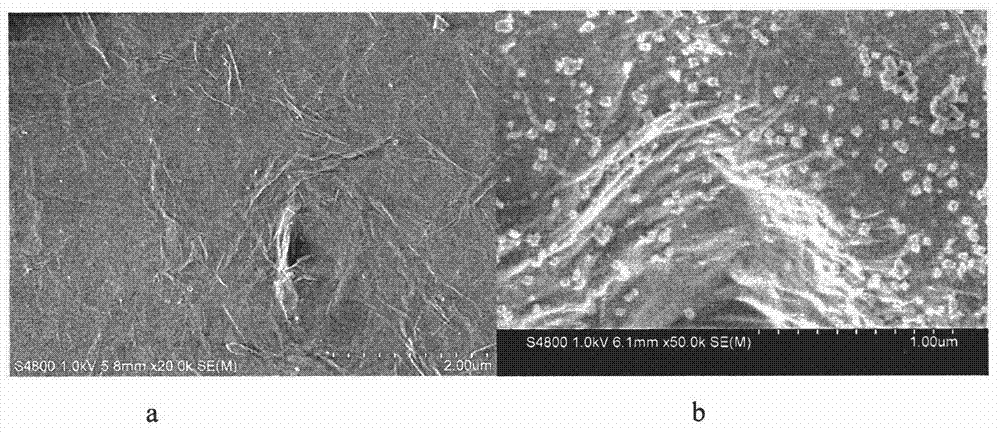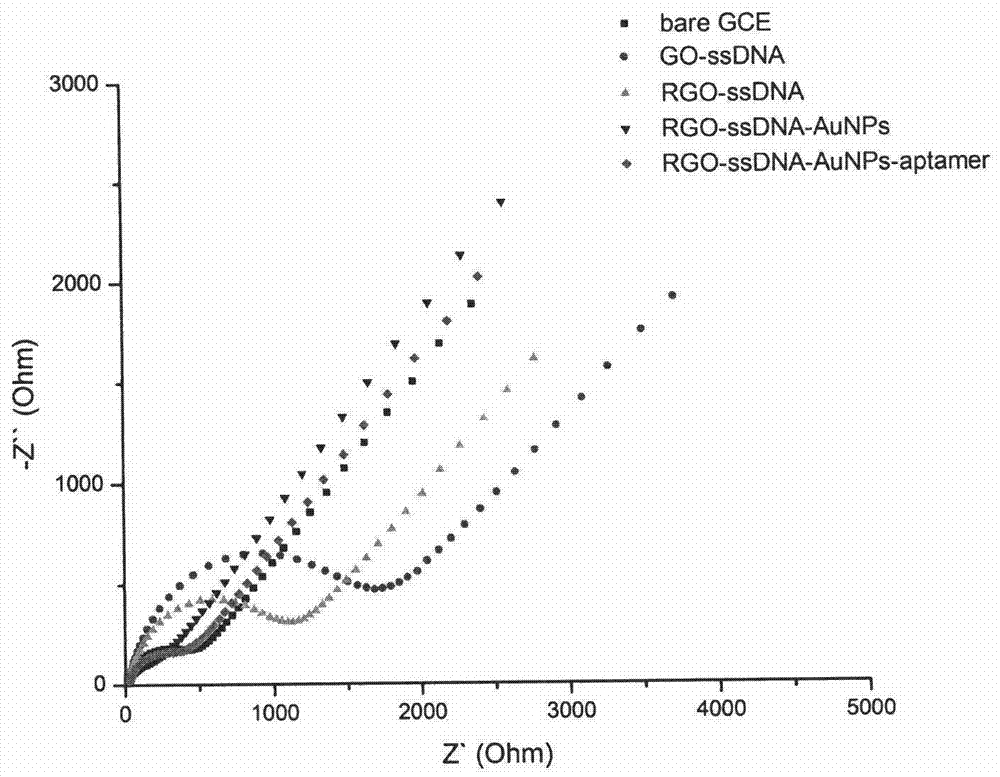Staphylococcus aureus unmarked electrochemical aptamer sensor based on reduced graphene oxide-nanogold composite material
An aptamer sensor and Staphylococcus technology, applied in the field of electrochemistry, can solve the problems of few detection methods, achieve the effects of improving sensitivity, expanding detection signal, and improving stability
- Summary
- Abstract
- Description
- Claims
- Application Information
AI Technical Summary
Problems solved by technology
Method used
Image
Examples
Embodiment 1
[0021] Dilute the Staphylococcus aureus solution into 8 concentration gradients sequentially with normal saline, numbered from 10 -1 ~10 -8 . At a constant temperature of 37°C, dilute the prepared modified capture probe with the working electrode to 10 -8 Concentration of bacterial solution incubation. After 30 min, the electrochemical impedance method was used for measurement in a three-electrode system. The working conditions are as follows: the electrolyte is 5mmol / LK containing 0.1mol / LKCl 3 [Fe(CN) 6 ] / K 4 [Fe(CN) 6 ](1:1), PH=7.4, the applied voltage is 0.24V, and the frequency range is 10 5 ~10 -1 HZ, the amplitude is 5mV. The same conditions, followed by 10 -7 ~10 -1 Impedance values were measured after incubating at a constant temperature of 37°C for 30 min in the bacterial solution of the concentration. Gently rinse the electrode surface with ultrapure water before and after each measurement, and carefully blot dry with filter paper.
[0022] According...
Embodiment 2
[0024] Prepare the working electrode modified with Staphylococcus aureus aptamer according to the method described in the invention, and measure its resistance R 0 ;
[0025] Take 3 centrifuge tubes, add 900 μL of commercially available pure milk to each, and add the concentration of 10 2 cfu / mL, 10 3 cfu / mL, 10 4 Each 100 μL of cfu / mL Staphylococcus aureus standard substance was prepared with a concentration of 10 1 cfu / mL, 10 2 cfu / mL, 10 3 cfu / mL milk standard sample of Staphylococcus aureus;
[0026] According to the invention, under the constant temperature condition of 37°C, the working electrode is sequentially mixed at a concentration of 10 1 cfu / mL, 10 2 cfu / mL, 10 3cfu / mL Staphylococcus aureus milk samples were incubated for 30min, carefully rinsed and placed in an electrochemical workstation for measurement. The measurement conditions were as follows: the electrolyte was 5mM K containing 0.1mol / L KCl 3 [Fe(CN) 6 ] / K 4 [Fe(CN) 6 ](1:1), PH=7.4, the applie...
PUM
 Login to View More
Login to View More Abstract
Description
Claims
Application Information
 Login to View More
Login to View More - R&D
- Intellectual Property
- Life Sciences
- Materials
- Tech Scout
- Unparalleled Data Quality
- Higher Quality Content
- 60% Fewer Hallucinations
Browse by: Latest US Patents, China's latest patents, Technical Efficacy Thesaurus, Application Domain, Technology Topic, Popular Technical Reports.
© 2025 PatSnap. All rights reserved.Legal|Privacy policy|Modern Slavery Act Transparency Statement|Sitemap|About US| Contact US: help@patsnap.com



